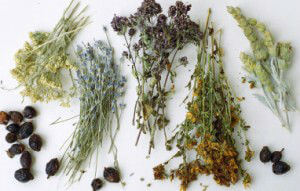
“Until man duplicates a blade of grass, nature can laugh at his so-called scientific knowledge. Remedies from chemicals will never stand in favour compared with products of nature, the living cell of the plant, the final result of the rays of the sun, the mother of life.” T.A. Edison
Pipsissewa (Chimaphila umbellata ) also known as Prince’s Pine, fragrant wintergreen, ground holly or king’s cure, is a beautiful perennial plant found in dry forests or sandy soil. It has a lovely pink or light purple flower and leaves that resemble a Christmas Cactus. The name “pipsisikweu” comes from the Cree language and it means “it breaks into small pieces.” This was in reference to the fact that the plant was used to break apart kidney and gallstones.
Although pipsissewa can be found in numerous regions throughout the United States, it is on the verge of extinction. As we continue to eat away at the nature that surrounds us, we often overlook little plants like pipsissewa that hold so much promise for our health.
Traditional Native American Uses of Pipsissewa
Native Americans used a leaf infusion to treat blisters and to wash out dry eyes. Leaves were also smoked as a tobacco substitute and teas were made to heal stomach problems. In Eastern Canada, native tribes used the plant to treat rheumatic conditions, head colds, kidney problems and tuberculosis. A native herbalist comments on the use of the plant to treat pregnant women.
“When a pregnant woman feels feverish and drowsy, she is not sick, her baby is. Make a small bundle of Pipsissewa about one inch thick using the whole plant. Put this in one-half quart of water to steep. Take a cupful four times a day until it is used up. ” – Sam Hill, Onondaga herbalist, Six Nations Reserve, 1912
Modern Use
Matthew Wood, author of The Earthwise Herbal: A Complete Guide to New World Medicinal Plants comments on the fiery hot nature of this little herb:
“Pipsissewa is a great ‘eliminator of kapha,’ if I may coin a phrase. It warms and activates the lymphatics and kidneys, the carriers and the persers of water in the body. It is indicated when the tongue is swollen and coated in the middle. This might be an indication of ‘spleen yang deficiency’ in traditional Chinese medicine, a category similar to ‘scrofula’ in old-time Western medicine.
There is usually congestion and stagnation of fluids and buildup of waste products. It warms and dissolves these congealed fluids and moves the wastes. Thus it is useful in cold, swollen, sluggish conditions and patients. In addition, it contains tannins that astringe the tissues and return them to good tone. It is indicated in the sluggishness, water retention, and weight gain of middle age.”
 According to WebMd, pipsissewa contains antiseptic and astringent qualities. It is used to treat bladder stones, fluid retention, urinary tract infections and cancer. It can even be applied to skin to treat sores and blisters as it reduces swelling and has an astringent effect on tissues. You will also find pipsissewa extract in a number of creams and lotions due to its soothing effect. Extracts are also used to flavor candy and rootbeer.
According to WebMd, pipsissewa contains antiseptic and astringent qualities. It is used to treat bladder stones, fluid retention, urinary tract infections and cancer. It can even be applied to skin to treat sores and blisters as it reduces swelling and has an astringent effect on tissues. You will also find pipsissewa extract in a number of creams and lotions due to its soothing effect. Extracts are also used to flavor candy and rootbeer.
Where to Find It
You can find dried pipsissewa or extracts at many health and whole foods stores or online. As with any herbal treatment, be sure to check with your health practitioner before using.
-The Alternative Daily
Sources:
http://botanical.com/botanical/mgmh/p/pipsis41.html
http://www.frostburg.edu/fsu/assets/File/ACES/chimaphila%20umbellata%20-%20final.pdf

